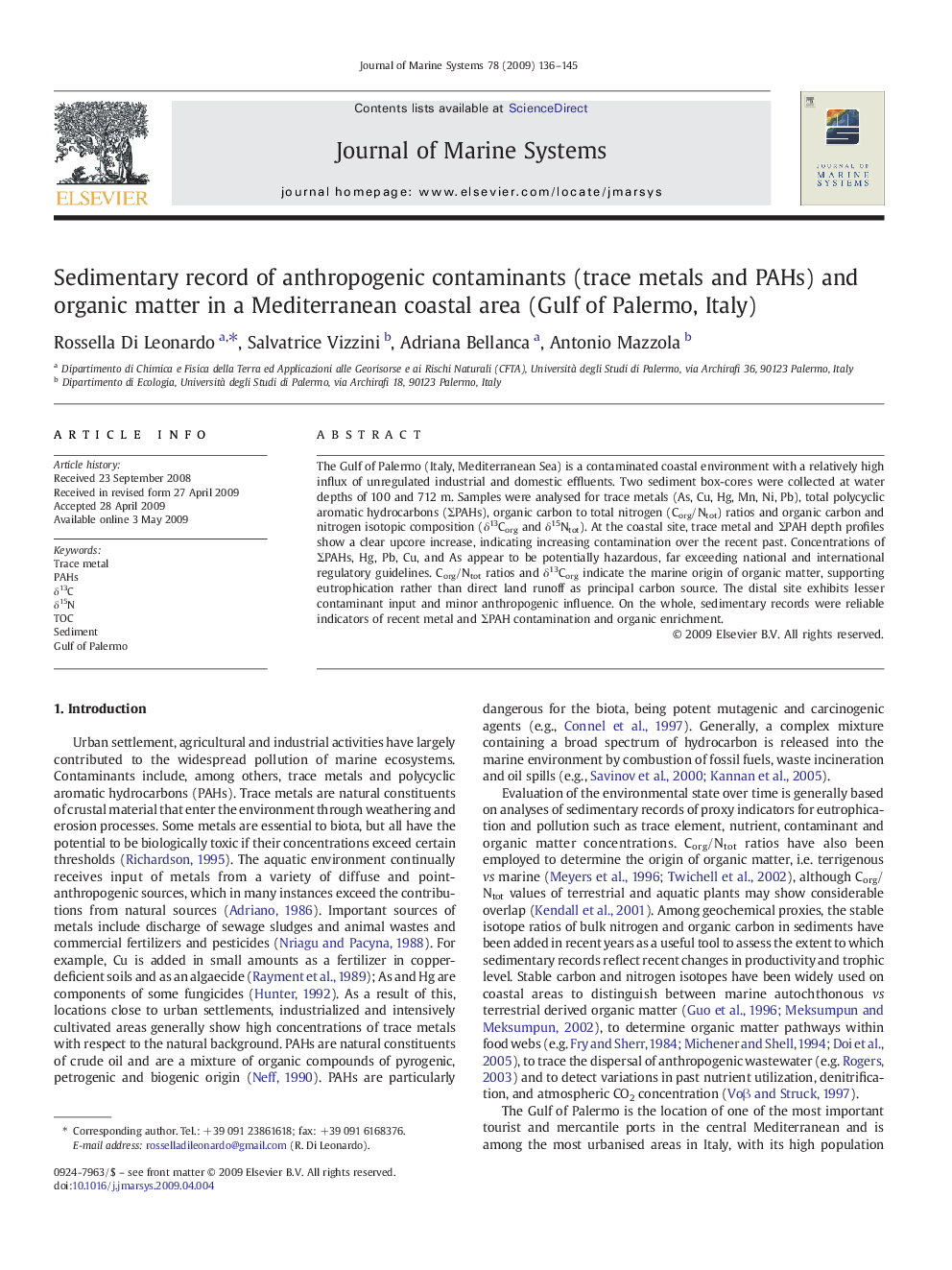| Article ID | Journal | Published Year | Pages | File Type |
|---|---|---|---|---|
| 4548870 | Journal of Marine Systems | 2009 | 10 Pages |
Abstract
The Gulf of Palermo (Italy, Mediterranean Sea) is a contaminated coastal environment with a relatively high influx of unregulated industrial and domestic effluents. Two sediment box-cores were collected at water depths of 100 and 712 m. Samples were analysed for trace metals (As, Cu, Hg, Mn, Ni, Pb), total polycyclic aromatic hydrocarbons (ΣPAHs), organic carbon to total nitrogen (Corg/Ntot) ratios and organic carbon and nitrogen isotopic composition (δ13Corg and δ15Ntot). At the coastal site, trace metal and ΣPAH depth profiles show a clear upcore increase, indicating increasing contamination over the recent past. Concentrations of ΣPAHs, Hg, Pb, Cu, and As appear to be potentially hazardous, far exceeding national and international regulatory guidelines. Corg/Ntot ratios and δ13Corg indicate the marine origin of organic matter, supporting eutrophication rather than direct land runoff as principal carbon source. The distal site exhibits lesser contaminant input and minor anthropogenic influence. On the whole, sedimentary records were reliable indicators of recent metal and ΣPAH contamination and organic enrichment.
Related Topics
Physical Sciences and Engineering
Earth and Planetary Sciences
Oceanography
Authors
Rossella Di Leonardo, Salvatrice Vizzini, Adriana Bellanca, Antonio Mazzola,
